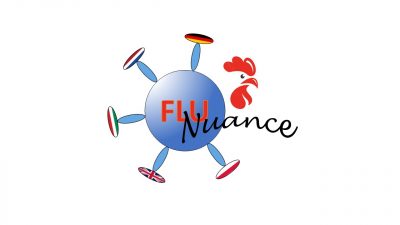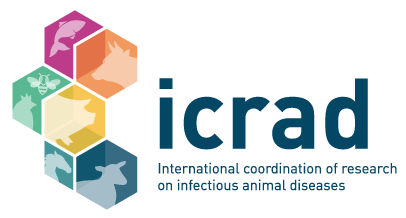Project details
Acronym: FluNuance
Researcher: Prof Dr Sjaak de Wit
Countries: Netherlands, Germany, Hungary, Poland, United Kingdom

Project Summary
Disease outbreaks are a major threat for the European poultry industry. Avian Influenza A virus (AIV) is a global problem, causing widespread harm to animal and public health, animal welfare and food production. In poultry, pathogenicity of AIV strains is binary classified into Highly Pathogenic (HPAI) and Low Pathogenic (LPAI), using an intravenous pathogenicity index (IVPI) test in 6-week-old chickens and/or the presence of multiple basic amino acids at the cleavage site of the virus hemagglutinin (HA). Many non-notifiable (nn-LPAI; i.e. non H5/H7 subtype) AIV strains usually cause mild or moderate infections, but with highly variable mortality. High virulence nn-LPAIVs are not predicted by IVPI, as shown by recent outbreaks in Belgium, where an H3N1 strain formally classified as LPAI (IVPI = 0.13) nevertheless caused >50% mortality and a 100% drop in egg production.
FluNuance is a multidisciplinary approach to unravel the determinants of increased virulence in LPAI viruses in chicken, mallard, geese and pigeon in order to better predict the severity of emerging AIV strains.
The project consists of 5 work packages (WP):
WP1. Determinants of H3N1 tissue tropism and virulence will generate the tools and reagents needed to test molecular hypotheses for the unusual and age-dependent pathogenicity of the A/chicken/Belgium/460/2019 (H3N1) virus. We will create a reverse genetics system for the virus, as well as labelled virus particles as tools for further WPs. The roles of HA cleavage site, receptor specificity and virus particle shape will be studied as potential virulence determinants.
WP 2. Determinants of host-virus interaction indicative for altered virulence. Four models, using tissues from chicken embryos and hatched birds, will be used to study host-virus interaction at epithelial surfaces, through virus challenge and receptor mapping experiments. The models represent the respiratory tract (Tracheal Organ Culture), intestinal tract (enteroid), reproductive tract (Oviduct Organ Culture) and embryonated eggs represent the complexity of the bird.
WP 3. Evaluation of the in vivo pathogenicity of WT and mutant H3N1 viruses in laying SPF birds and young male and female chicks to understand, through detailed pathological and immunological analyses, the unusual pathogenicity of the virus. In addition, the behaviour of the mutant viruses generated in WP1 will be similarly assessed, to test hypotheses regarding the viral basis of pathogenicity.
WP 4. The virulence of WT and mutant H3N1 viruses will be assessed first using embryonated eggs of wild bird species which are selected based on their different epidemiological impact on virus spread and susceptibility to AIV: mallard, geese and pigeon. Organ tropism, influence of age, innate responses and host receptor distribution will be determined. In vivo pathogenicity tests of H3N1 WT/rg on selected species will be conducted.
WP 5. Developing diagnostic tests to assess pathogenic potential of emerging LPAI viruses. A set of LPAI ranging from avirulent through to mild and moderate virulence will be compared in the systems used in WP2, looking for commonalities in response between virulence classes. The outcome will guide the development of a more tractable assay that can be used to classify the virulence of novel LPAI strains of AIV.
FluNuance brings together leading avian infection and immunity groups from University and national veterinary institutes to focus their skills, tools and expertise on a problem of genuine concern and economic impact for the poultry industry. The consortium members have all worked in the past with AIV, and have excellent research environments enabling application of state-of-the-art technologies. The project integrates resources and expertise that are not available in the laboratory of any one partner, and thus offers substantial added-value to the funders.
